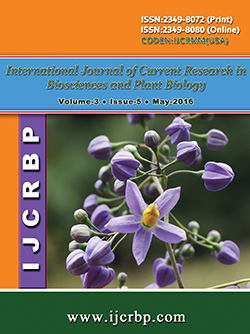 |
Online ISSN : 2349-8080 Issues : 12 per year Publisher : Excellent Publishers Email : editorinchiefijcrbp@gmail.com |
2Department of Microbiology, Kanchi Shri Krishna College of Arts and Science, Kilambi, Kancheepuram-631 551, Tamil Nadu, India
Total microbial population (bacteria, fungi and actinomycetes) and phosphatases (acid and alkaline phosphatase) activity have been studied during the vermicomposting of pre-decomposed (21 days) teak leaf litter, paper mill sludge and pressmud in combination with cowdung (1:1) using the earthworm, Perionyx ceylanensis for a period of 60 days. The vermibed samples were collected on 0, 15, 30, 45 and 60th day of vermicomposting and subjected to the analysis of total microbial population and phosphatases activity using standard procedures. The results showed that the acid phosphatase activity range was found to be 0.095 to 0.154 m moles of phenol liberated / l. Alkaline phosphatase which ranged from 0.38 to 0.98 m moles of phenol liberated/l, also showed similar trend of statistically significant increase. The total bacterial, fungal and actinomycetes in the vermibed substrates from 0th day to 60th day showed gradual increase. The correlation of total bacterial population with acid phosphatase in teak leaf litter + cowdung vermibed combination was y = 12.32x + 6.529 (R2 = 0.890; p=0.01), in paper mill sludge + cowdung vermibed combination was y = 15.20x + 6.547 (R2 = 0.703, p=0.05), and in pressmud + cowdung vermibed combination was y = 8.407x + 7.218 (R2 = 0.672, p=0.05). The increase of total microbial population is positively correlated with the increase of phosphatases.
